|
Topics
Apologetics
Archeology
&
Anthropology
Astronomy
&
Cosmology
Bible & Science
Creation
&
Evolution
Education
Environment
Ethics
Historical Studies
Mathematics
Origin of Life
Philosophy
Physical Science
Psychology &
Neuroscience
Science &
Technology Ministry
Teaching & Research
Worldview
Whole-Person Education
Youth Page
Publications
JASA/PSCF
Articles
Book Reviews
ASA/CSCA Newsletter
Issues
Recommended Current Books
______________
|
|
Archeology, Anthropology, and Paleontology
Archeology
and Anthropology together encompass the study of
humans from the distant origins of the human species to the present day. Archeology grew from eighteenth-century
antiquarianism while anthropology began even earlier in the early days of
colonial encounter.
Today both subjects involve a range of sophisticated approaches shared with the arts, social sciences and
physical sciences - and lively interaction. Thus, for example, the
anthropological study of primates and early humans helps archaeologists, using
the physical remains recovered, to reconstruct the ways in which our earliest
ancestors lived, while scientific dating techniques produce the time frame, and
the latest genetic analyses define their relationships to modern human
populations. - Oxford University
Program Description
a range of sophisticated approaches shared with the arts, social sciences and
physical sciences - and lively interaction. Thus, for example, the
anthropological study of primates and early humans helps archaeologists, using
the physical remains recovered, to reconstruct the ways in which our earliest
ancestors lived, while scientific dating techniques produce the time frame, and
the latest genetic analyses define their relationships to modern human
populations. - Oxford University
Program Description
In the United States, Archeology is taught as one of
four sub-disciplines of anthropology (with cultural anthropology, physical
anthropology, and linguistics).
Paleontology focuses on ancient life. It seeks to describe
phenomena of the past and reconstruct their causes. Hence it has three main
elements: description of the phenomena; developing a general theory about the
causes of various types of change; and applying those theories to specific
facts.
______________________________________________________________
What is Christian Anthropology
Many people have at one time or another heard or seen an
anthropologist on some science show or a program about how
humans came to be, and how they formed societies and culture
and all those other wonderful things we’re known for. In its
most basic terms, anthropology is the study
of humanity. Christian anthropology revolves around the study of
the human as we relate to the God of the Bible.
Christian anthropology studies humanity and its nature. This
is an important distinction, for standard anthropology deals
with the physical study of man across great lengths of time
or in one place or another in our physical world. Christian
anthropology, though, attempts to look deep into the nature
of man and how he interacts with our Lord. For example, a
person engaged in the profession of Christian anthropology
might try to examine the meaning that lay behind the fact
that God created man in his image, as noted in the Bible, in
Genesis 1:26-27 (NIVe) where God
has … “made man in our own image…” What does it mean that
God did this? Is this the immaterial part of a man or an
actual physical resemblance to God? That’s a central
question for Christian
anthropology.
Christian anthropology is also concerned with
man’s essential makeup. Is it body, soul, and
spirit, or something else? This is also part of the study of
the nature of man. According to passages in the Bible, there
are notions that revolve around the things that form a
person. Some are material – such as the body – while others
are immaterial (without solid form), like a soul and a
spirit. A Christian anthropologist, and almost any other
person, knows that we have a body which can be touched or
harmed or made to feel physical pleasure. One of the central
beliefs in our Christian relationship to God is that this
physical body will be resurrected at the end times. Also,
conscience and logic tell us we have an actual physical
existence on this world, which helps the Christian
anthropologist in his or her studies.
Christian anthropology tries to examine our
spirit and our soul and their relationship to one another
and to God. The spirit and the soul, however, are
far more intangible, but no less important (most Christians
would say far more important) than the human body. Christian
anthropology seeks to examine the question of soul and
spirit and their relationship to one another. It’s helpful
to know that when the Bible mentions “spirit,” it refers to
our personal relationship to God. The soul, though, can be
both material and immaterial, and an anchor to our physical
world and to God’s world at the same time.
It is simply impossible to agree on ethics, on how to act,
on what is good and what is not, if you disagree about
metaphysics or anthropology. And since ethics is
unavoidable, so is anthropology.
_____________________________________________________________
Archaeology
![Archaeologists mapping their finds at Pachacamac, Peru, an indigenous town occupied from …
[Credit: Martin Mejia/AP] Archaeologists mapping their finds at Pachacamac, Peru, an indigenous town occupied from …
[Credit: Martin Mejia/AP]](images/92022-003-EB3940BE.gif) The
scientific study of the material remains of past human life and activities.
These include human artifacts from the very earliest stone tools to the
man-made objects that are buried or thrown away in the present day:
everything made by human
beings—from
simple tools to complex machines, from the earliest houses and temples and
tombs to palaces, cathedrals, and pyramids. Archaeological investigations
are a principal source of knowledge of prehistoric, ancient, and extinct
culture. The word comes from the Gree karchaia (“ancient
things”) and logos (“theory”
or “science”).Enc.
Britiannica The
scientific study of the material remains of past human life and activities.
These include human artifacts from the very earliest stone tools to the
man-made objects that are buried or thrown away in the present day:
everything made by human
beings—from
simple tools to complex machines, from the earliest houses and temples and
tombs to palaces, cathedrals, and pyramids. Archaeological investigations
are a principal source of knowledge of prehistoric, ancient, and extinct
culture. The word comes from the Gree karchaia (“ancient
things”) and logos (“theory”
or “science”).Enc.
Britiannica
An Up-to-date
Review: "Peopling
the Americas" from Archaeology (2014 )
News
Item
Date:
September 17, 2014
Source:
Harvard Medical School
Summary:
Previous work suggested that Europeans descended from two
ancestral groups: indigenous hunter-gatherers and early European
farmers. This new study shows that there was also a third
ancestral group, the Ancient North Eurasians, who contributed
genetic material to almost all present-day Europeans. The
research also reveals an even older lineage, the Basal
Eurasians.
DNA Reveals Origins of First European Farmers
Science Daily
(Nov. 10, 2010) —
A team of international researchers led by
ancient DNA experts from the University of Adelaide has resolved
the longstanding issue of the origins of the people who
introduced farming to Europe some 8000 years ago.
A detailed genetic study of one of the first farming communities
in Europe, from central Germany, reveals marked similarities
with populations living in the Ancient Near East (modern-day
Turkey, Iraq and other countries) rather than those from Europe.
Project leader Professor Alan Cooper, Director of the Australian
Centre for Ancient DNA (ACAD) at the University of Adelaide,
says: "This overturns current thinking, which accepts that the
first European farming populations were constructed largely from
existing populations of hunter-gatherers, who had either rapidly
learned to farm or interbred with the invaders."
The results of the study have been published today in the online
peer-reviewed science journal PLoS
Biology.
"We have finally resolved the question of who the first farmers
in Europe were -- invaders with revolutionary new ideas, rather
than populations of Stone Age hunter-gatherers who already
existed in the area," says lead author Dr Wolfgang Haak, Senior
Research Associate with ACAD at the University of Adelaide.
"We've been able to apply new, high-precision ancient DNA
methods to create a detailed genetic picture of this ancient
farming population, and reveal that it was radically different
to the nomadic populations already present in Europe.
"We have also been able to use genetic signatures to identify a
potential route from the Near East and Anatolia, where farming
evolved around 11,000 years ago, via south-eastern Europe and
the Carpathian Basin (today's Hungary) into Central Europe," Dr
Haak says.
The project involved researchers from the University of Mainz
and State Heritage Museum in Halle, Germany, the Russian Academy
of Sciences and members of the National Geographic Society's
Genographic Project, of which Professor Cooper is a Principal
Investigator and Dr Haak is a Senior Research Associate.
The ancient DNA used in this study comes from a complete
graveyard of Early Neolithic farmers unearthed at the town of
Derenburg in Saxony-Anhalt, central Germany.
"This work was only possible due to the close collaboration of
archaeologists excavating the skeletons, to ensure that no
modern human DNA contaminated the remains, and nicely
illustrates the potential when archaeology and genetics are
combined," says Professor Kurt Werner Alt from the collaborating
Institute of Anthropology in Mainz, Germany.
.
Why
Are There So Few Christian Anthropologists? Reflections on the
Tensions Between Christianity and Anthropology, Dean A,
Arnold
In his provocative book, The Scandal of the
Evangelical Mind, evangelical historian
Mark Noll decries the
lack of an evangelical mind in the academy, and challenges
evangelical
Christians to consider the importance of the
cultivation of the mind as a divine calling.
Unfortunately, the
Christian mind in anthropology lags behind many disciplines because,
among other reasons, there are so few Christian anthropologists. Why
is this? According to
a Carnegie Foundation survey, anthropology
is the most secular of the disciplines. It has
a record of
hostility to Christianity that is borne out by the experiences by
many evangelical
Christians. This essay elaborates some of the
tensions between anthropology and Christianity
and provides a
response to some of these tensions. It suggests that evangelical
Christians can
influence the academy by immersing themselves in
it and by pursuing pure research rather
than just focusing on more applied concerns
such as missions, development and the church.
ASA interests are found primarily in in the
cultures and artifacts that may offer light on the
periods and
descriptions in the Bible and in
tracing human history.
Deeply held world views by Christian and non-Christian alike may
obscure objective discussion of new information
We
first point to a recent book and several articles that characterize current
views toward 'biblical' ('Syro/Palestinian')
archaeology.
A review of Shifting Sands
describes the issues:
"Thomas W. Davis's,
Shifting Sands: The Rise and Fall of Biblical Archaeology,
Oxford: Cave,jpg University Press, 2004 could not be more timely. The long-standing
question of the historicity, the truth, of the Bible; understanding the role
that it has played in the now-beleaguered Western cultural tradition; seeing how
archaeology is being employed today in the Middle East by all parties to create
a past (or invent it) that may well shape all our futures-these are burning
issues. Davis's well told story of archaeology in the region, his balanced
judgments, and his cautious optimism for an honest dialogue between archaeology
and biblical studies, free of theological and nationalistic biases, offer some
hope at a time when skepticism prevails." --William G. Dever, Professor of
Near Eastern Archaeology emeritus, University of Arizona
University Press, 2004 could not be more timely. The long-standing
question of the historicity, the truth, of the Bible; understanding the role
that it has played in the now-beleaguered Western cultural tradition; seeing how
archaeology is being employed today in the Middle East by all parties to create
a past (or invent it) that may well shape all our futures-these are burning
issues. Davis's well told story of archaeology in the region, his balanced
judgments, and his cautious optimism for an honest dialogue between archaeology
and biblical studies, free of theological and nationalistic biases, offer some
hope at a time when skepticism prevails." --William G. Dever, Professor of
Near Eastern Archaeology emeritus, University of Arizona
K. A. Kitchen, The Old Testament in the Word Today, Faith and
Thought, October 2007 No. 43. (3-17).
survey of OT work
Alan Millard,
The First Christians - Archaeologicaly Indivisible? Faith and
Though, October 2008 No. 45. (5-15). survey of NT
work
Garry K. Brantley,
November 1993, 13[11]:81-85.
“Biblical historical data are accurate to an extent far surpassing the ideas of any modern critical students, who have consistently tended to err on the side of hypercriticism” (1949, Albright, p. 229).
“Archaeologists now generally agree that their discoveries...have produced a new consensus about the formation of ancient Israel that contradicts significant parts of the biblical version” (Strauss, 1988).
"These statements represent the conflicting messages that characterize the field of archaeology. In Albright’s era, archaeologists’ interpretations of field excavations ordinarily corroborated biblical information. It was common for prominent archaeologists such as Nelson Glueck to confidently affirm: “...no archaeological discovery has ever controverted a Biblical reference” (1959, p. 31)."
"Prior to the 1970s, interpretations of archaeological explorations generally heightened the Bible’s credibility (Davis, 1993, 19[2]:54-59). Since then, however, the amiable relationship between archaeology and the Bible has deteriorated dramatically. It is commonplace for the new generation of archaeologists to spurn the historical credibility of the biblical narrative (see Dever, 1990, 16[3]:52-62)."
"Archaeology, therefore, presents a challenge to those who contend for the integrity of the Scriptures. How are we to respond? On what basis do many archaeologists repudiate the historicity of the biblical text, and how reliable are their methods? To answer these and other questions we must have a basic understanding of the science of archaeology."
Brantley
Clyde McCone,
"The
Phenomena of Pentecost," JASA
23 (September 1971): 87-88.
"Reliable historical evidence both from the
Scriptures and from the cultural context of the event,
confirms that the Galileans on the day of Pentecost bore
witness to the resurrected Christ in languages with which
they and their hearers were familiar. The validity of
accepting the cultural and linguistic evidence with respect
to the miracle of the outpouring of the Holy Spirit rests
upon the complementary harmony which exists between the
natural and the supernatural, and hence between science and
Divine Revelation."
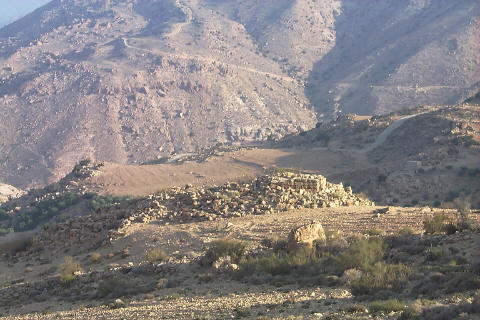 Site of Qasr al-Qarqur, Jordan
Site of Qasr al-Qarqur, Jordan
Recent PSCF authors
have sought to date the biblical flood, place the garden of Eden, date the human
race and other questions using archaeological evidence in
conjunction with textual and geological evidence.
John Argubright's
Web Site offer a wealth of evidence supporting the biblical text. (just
click to open)
Wilcox, David L.,
Establishing Adam: Recent Evidences for a Late-Date Adam (AMH@100,000 BP),
PSCF
56.1 (2004):49-54.
The
appearance of modern humans continues to be a major controversy in
paleoanthropology. The issues include genetic, anatomical, and cultural matters.
For the Christian, there are also important theological issues, leading to
various estimations of the timing of Eden ranging from two million years ago to
six thousand years ago.. Several interesting papers related to this issue were
published last year. This communication notes several of these and suggests a
biological mechanism possibly involved in the process by which God created
humanity.
Seely, Paul H.,
Concordism's Illusion That It Is Upholding the Historicity of
Genesis,
PSCF
56.1
(2004:75-76.
In PSCF Letters (June 2003: 138),
I said that neither creation science’s
global flood nor concordism’s local flood could solve the problem of the
conflict between the biblical account of the flood and the findings of
modern science. Since then Carol Hill (PSCF 55 [Sept. 2003]: 209), John
McIntyre, and Thomas Godfrey (PSCF 55 [Dec. 2003]: 276–8) have written
resisting my answer to the problem, namely that God accommodated his
theological revelation in Genesis 1–11 to the now antiquated science/
history of the times. They say they believe the history in Genesis 1–11
is accurate
....
Seely, Paul H.,
The GISP2 Ice Core: Ultimate Proof that Noah's Flood Was Not Global
PSCF 55.4
(2003): 252-260 .
Recently an ice core nearly two
miles long has been extracted from the Greenland ice sheet. The first 110,000
annual layers of snow in that ice core (GISP2) have been visually counted and
corroborated by two to three different and independent methods as well as by
correlation with volcanic eruptions and other datable events. Since the ice
sheet would have floated away in the event of a global flood, the ice core is
strong evidence that there was no global flood any time in the last 110,000
years.
Godfrey, Thomas James,
Do Ice Cores Disprove Aardsma's Flood Theory?
PSCF 56.1
(2004):76-77. Seeley questioned.
Hill, Carol A.
Making Sense of the Numbers of Genesis ,
PSCF 55.4:239-251
(12/2003).
Among the greatest stumbling
blocks to faith in the Bible are the incredibly long ages of the patriarchs and
the chronologies of Genesis 5 and 11 that seem to place the age of the Earth at
about 6,000 years ago. The key to understanding the numbers in Genesis is that,
in the Mesopotamian world view, numbers could have both real (numerical) and
sacred (numerological or symbolic) meaning. The Mesopotamians used a sexagesimal
(base 60) system of numbers, and the patriarchal ages in Genesis revolve around
the sacred numbers 60 and 7. In addition to Mesopotamian sacred numbers, the
preferred numbers 3, 7, 12, and 40 are used in both the Old and New Testaments.
To take numbers figuratively does not mean that the Bible is not to be taken
literally. It just means that the biblical writer was trying to impart a
spiritual or historical truth to the text-one that surpassed the meaning of
purely
rational numbers.
Hill,
Carol A.,
The Noachian Flood: Universal or Local?
PSCF
54.3: 170-183 (2002)
170-
The biblical and scientific evidence pertaining to the
subject of a universal versus local Noachian Flood are discussed in this paper.
From a biblical perspective, a universal flood model (and its corollary models:
flood geology and the canopy theory) is based primarily on: (1) the universal
language of Gen. 6.8, (2) Gen 2:5.6, and (3) the presumed landing of Noah's ark
on the summit of Mount Ararat (Gen. 8:4). It is argued that the .universal.
language of Gen. 6.8 was meant to cover the whole known world of that time
(third millennium BC), not the entire planet Earth, and that this interpretation
also applies to Gen. 2:5.6.the verses on which the canopy theory is based. It is
also argued that the .fifteen cubits upward. flood depth mentioned in Gen. 7:20
favors a local rather than a universal flood. From a scientific perspective, a
universal flood, flood geology, and canopy theory are entirely without support.
The geology of the Mount Ararat region precludes the premise of flood geologists
that all of the sedimentary rock on Earth formed during the time of Noah.s
Flood. The most likely landing place of the ark is considered to have been in
the vicinity of Jabel Judi (the .mountains of Ararat. near Cizre, Turkey) within
the northern boundary of the Mesopotamian hydrologic basin, rather than on
17,000-foot-high Mount Ararat in northeastern Turkey. Since it would have been
logistically impossible for all animal species on Earth to be gathered by Noah
and contained in the ark, it is concluded that the animals of the ark were those
that lived within the Mesopotamian region. The archaeological record outside of
Mesopotamia also does not support a universal flood model. All of the evidence,
both biblical and scientific, leads to the conclusion that the Noachian deluge
was a local, rather than universal, flood.
Morton, Glenn R.,
Language at the Dawn of Humanity PSCF
54.3:193-194 (9/2002).
Over the years, anthropology
continuously has pushed back the date for the appearance of
language and this will continue. The
existence of language is of immense importance to apologetics, as God taught
Adam to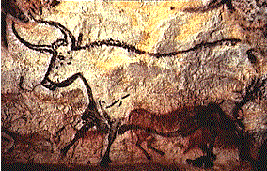 speak. speak.
Prehistoric cave paintings. Lassac Cave
Hill, Carol A.,
The Garden of Eden: A Modern Landscape PSCF 52.1:31-46
(3/2000).
In this paper, I try to apply the
findings of modern geology to Gen. 2:10-14. I deduce from the evidence that the
four rivers of Eden--the Pishon, the Gihon, the Hiddekel, and the
Euphrates--were real rivers which existed on a modern landscape before Noah's
flood. The now-dry Wadi al Batin was probably the Pishon River, the Gihon was
probably the Karun River, and the Hiddekel (Tigris) and Euphrates Rivers flowed
in approximately the same courses as they occupy today. The confluence of these
four rivers was located at the head of the Persian Gulf, but a Gulf that may
have been inland from where it is today. The spring which "rises up" in Eden
could have been supplied by the Dammam Formation, the principal aquifer of the
region. Oil-drilling in southern Iraq confirms that six miles of sedimentary
rock exist below the biblical site for the Garden of Eden. This same sedimentary
rock is the source of bitumen at Hit, a site which may have supplied Noah with
pitch for constructing the ark. The question is asked: How could pre-flood Eden
have been located over six
miles of sedimentary rock supposedly formed during Noah's flood?
Theological Anthropology
Nature,
Technology and the
Imago Dei:
Mediating the Nonhuman through the Practice of Science, Bret
Stephenson. PSCF 57:1, 6, M 2005.
Seeks "to open up an interdisciplinary dialog
among theological anthropology, the doctrine of creation and...sociological
accounts of the technological practice of science."
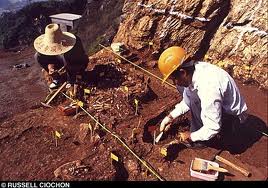 Reforming Theological Anthropology: After the
Philosophical Turn to Relationality
, F. LeRon Shults, Grand Rapids: Eerdmans, 2003.
Review and author's response Reforming Theological Anthropology: After the
Philosophical Turn to Relationality
, F. LeRon Shults, Grand Rapids: Eerdmans, 2003.
Review and author's response
Becoming
Human; On Theological Anthropology in an age of
Engineering Life Canadian Council of Churches,
2004.
A Christian Perspective on the Impact of Modern Science on
Philosophy of Mind Moreland, J. P.,
PSCF 55.1:2-13 (3/2003) "Today it is widely held that, while broadly
logically possible, dualism is no longer plausible in light of the advances of
modern science. My thesis is that once we get clear on the central first and
second-order issues in philosophy of mind, it becomes evident that stating and
resolving those issues is basically a (theological and) philosophical matter for
which discoveries in the
hard sciences are largely irrelevant. Put
differently, these philosophical issues are, with rare exceptions, autonomous
from (and authoritative with respect to) the so-called deliverances of the hard
sciences.".Moreland
Portraits of Human Nature: Reconciling Neuroscience and
Christian Anthropology
Warren S. Brown and Malcolm A. Jeeves,
Science and Christian Belief 11 No. 2 (October 1999): 139-150.
A report from a seminar at the
combined meeting of the American Scientific Affiliation and
Christians in Science, Churchill College, Cambridge University,
August, 1999
See also:
Related papers in psychology and the neurosciences
ORIGINAL SIN AND CHRISTIAN ANTHROPOLOGY
A Catholic view of the subject.
Biblical Anthropology (Chicago Reformed
Biblical Institute course)
Course Description
This course is designed to lead the
student in a survey of the doctrines connected with man and his fall.
Attention is given to the original state of man and the consequent state of
man after the fall.
Course Objectives
After
completing this course, the student should be able to: Outline the various
modern views on man and significance of study of theological anthro-pology;
Define and discuss the origin, unity, constitution, and image of God in man;
Provide a proper understanding of the idea of original and actual sin;
Outline the Pelagian and semi- Pelagain view of man.
Paleontology
Are ethnic groups genetically definable?
As far as
scientists know, no particular genes make a person Irish or Chinese or
Zulu or Navajo. These are cultural labels, not genetic ones. People in those
populations are more likely to have some alleles in common, but no
allele will be found in all members of one population and in no members of
any other. (There may be rare variations, however, that are found
only in some populations.) This cannot be very surprising, in light of
the vast extent of intermarriage among human populations, now and
throughout history and prehistory. There is no such thing as a
genetically "pure" human population.--
Morrison Institute
Federal examiners have rejected patents for genetic screening tests because
the applicants did not explore their effectiveness for different races,
adding to the debate about whether race has scientific validity in modern
DNA-based medicine. Some geneticists, sociologists and bioethicists argue
that “black,” “white,” “Asian” and “Hispanic” are antiquated categories that
threaten to revive prejudices. Others, however, say that meaningful DNA
variations can track racial lines and that ignoring them could deny many
benefits of “personalized medicine,” which aims to develop tests and
treatments tailored to a person’s genetic makeup.....
________________________________________________________________________________
Conversations
The Dispersal of the Australopithecines, Part II
by Jason KiderThe South
African Forms
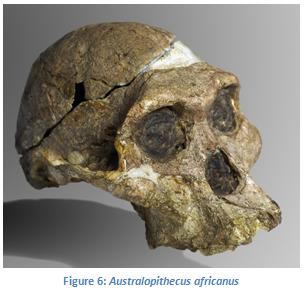 "...the discovery of the Taung child in South Africa
fueled interest that other hominins could be found as well. With the help of
noted anatomist Robert Broom, and anthropologist John T. Robinson, Raymond
Dart excavated several other sites in the South African cave system,
Makapansgat, Swartkrans, Sterkfontein and Kromdraai, all of which yielded
australopithecine remains of both an early gracile form and later robust
form. The earlier form, dated to between 3.0 and 2.0 million years ago and
to which the Taung find belonged, was called Australopithecus africanus
(see Figure 6). Exact dating for these cave sites is hampered by the fact
that the cave openings are vertical and it is not clear how the hominins got
there. Unlike the east African forms, A. africanus was a very
lightly built form, with no crests of any kind. The overall cranial capacity
of the finds is between 430 and 520 cubic centimeters, slightly larger than
that of..."
Biologos 2011 "...the discovery of the Taung child in South Africa
fueled interest that other hominins could be found as well. With the help of
noted anatomist Robert Broom, and anthropologist John T. Robinson, Raymond
Dart excavated several other sites in the South African cave system,
Makapansgat, Swartkrans, Sterkfontein and Kromdraai, all of which yielded
australopithecine remains of both an early gracile form and later robust
form. The earlier form, dated to between 3.0 and 2.0 million years ago and
to which the Taung find belonged, was called Australopithecus africanus
(see Figure 6). Exact dating for these cave sites is hampered by the fact
that the cave openings are vertical and it is not clear how the hominins got
there. Unlike the east African forms, A. africanus was a very
lightly built form, with no crests of any kind. The overall cranial capacity
of the finds is between 430 and 520 cubic centimeters, slightly larger than
that of..."
Biologos 2011
Ralph F. Stearley,
"Assessing Evidences for the Evolution of a
Human Cognitive Platform for “Soulish Behaviors”," PSCF
61
(September 2009): 152-174.
During the past one hundred
fifty years, a great number of fossil hominid specimens have been unearthed, providing an outline of hominid history
extending back five million years. Associated with these hominid fossils are
artifacts. Christians and others who have attempted to assess the humanity of these
long-dead individuals have focused on evidences of cognition such as cave art,
evidences of care given to injured or ill individuals, or burial. However, many more
types of evidences as to cognitive abilities in these creatures are available. Warren Brown has proposed that a cluster of interlinked
cognitive capacities were elaborated over the past few million years of hominid
history during an “evolutionary trajectory” which, in turn, undergird human “soulish
behaviors.”1
These include language, a theory of mind, episodic
memory, top-down agency, future orientation, and emotional modulation. This article is an attempt to put
traction on Brown’s proposal, through detailed examination of the
paleoanthropological record. The ability to teach, and thus symbolically and rapidly transmit
culture, is suggested as an additional capacity which is part of this cognitive
platform. Primary data (anatomy, artifacts) and reliable inferences (based on comparative
studies) support a notion of a stage-wise erection of a cognitive platform for soulish
behaviors. A few significant, less-understood gaps remain in the cognitive trajectory.
Wilcox, David L.,
Establishing Adam: Recent Evidences for a Late-Date Adam (AMH@100,000 BP)
, PSCF
56 (March 2004): 49-54.
Jeffrey K. McKee
review of The First Human: The Race to Discover Our
Earliest Ancestors. Ann Gibbons. xxvi + 306 pp. Doubleday, 2006.
Ever since a 1924 revelation first pointed to Africa as the cradle of humankind, a slow but steady stream of fossil discoveries has brought a general view of human evolution into focus. The pace
has accelerated in the past 15 years, rapidly yielding an intriguing yet bewildering array of fossils of early ancestors of Homo sapiens. These new finds push back the base of our unique line, and
that of our not-so-distant cousins, to possibly 6 or more million years ago. This time period is tantalizingly close to what most genetic models predict for the divergence of lineages that
ultimately evolved into humans and chimpanzees. Finding a representative of the species that
took the first step-on two legs-toward becoming human is indeed one of the key pursuits of
paleoanthropology.
(more) American Scientist
The earliest peoples in Virginia
Video 30 min.
Discussion of current views.
Archaeology:
Earliest Human Sacrifice Found in Africa
Video 2 min.
The discovery of 5,500-year-old bones by a French archaeologist is the
oldest example of human sacrifice on the African continent.
Linguistics an allied science
The worldwide status of Bible translation (2008)--
wycliffe
6,909
|
...the number of languages spoken in the world today
|
2,393
|
...the number of languages without any of the Bible, but with a
possible need of a Bible translation to begin
|
200,000,000
|
...the number of people who speak the 2,393 languages where
translation projects have not yet begun
|
1,998
|
...the number of translation programs currently in progress for
languages without adequate Scripture
|
nearly 80%
|
...amount of the world's remaining Bible translation needs that
are located in the
three areas of greatest need |
1,168
|
...the number of language communities which have access to the
New Testament in their heart language
|
438
|
...the number of language communities which have access to the
entire Bible in the language they understand best
|
6,500,000,000
|
...the population of the world |
The ideal translation will be accurate as to meaning and natural
as to the receptor language forms used. An intended audience who is
unfamiliar with the source text will readily understand it. The
success of a translation is measured by how closely it measures up
to these ideals.
The ideal translation should be
- Accurate: reproducing as exactly as possible the meaning of
the source text.
- Natural: using natural forms of the receptor language in a
way that is appropriate to the kind of text being translated.
- Communicative: expressing all aspects of the meaning in a
way that is readily understandable to the intended audience.
Translation is a process based on the theory that it is possible
to abstract the meaning of a text from its forms and reproduce that
meaning with the very different forms of a second language.
Translation, then, consists of
studying the lexicon, grammatical structure, communication
situation, and cultural context of the source language text,
analyzing it in order to determine its meaning, and then
reconstructing this same meaning using the lexicon and
grammatical structure which are appropriate in the receptor
language and its cultural context. Larson: SIL
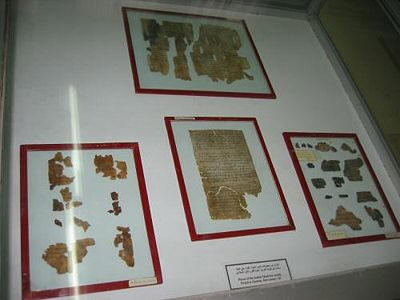 Fragments
at Amman Museum Fragments
at Amman Museum
Return

___________________________________________________________________________________
|


![Archaeologists mapping their finds at Pachacamac, Peru, an indigenous town occupied from …
[Credit: Martin Mejia/AP] Archaeologists mapping their finds at Pachacamac, Peru, an indigenous town occupied from …
[Credit: Martin Mejia/AP]](images/92022-003-EB3940BE.gif)
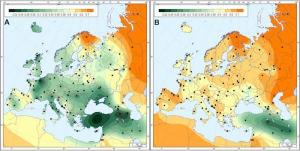

 Site of Qasr al-Qarqur, Jordan
Site of Qasr al-Qarqur, Jordan
 speak.
speak. Reforming Theological Anthropology: After the
Philosophical Turn to Relationality
Reforming Theological Anthropology: After the
Philosophical Turn to Relationality "...
"...
